We can develop phobias about anything and everything. But their grip on our imaginations is also a clue to our evolutionary and personal histories
We are all driven by our fears and desires, and sometimes we are in thrall to them. The American physician Benjamin Rush kicked off the craze for naming such fixations in 1786. Until then, the word “phobia” (which is derived from Phobos, the Greek god of panic and terror) had been applied only to symptoms of physical disease, but Rush used it to describe psychological phenomena. “I shall define phobia to be a fear of an imaginary evil,” he wrote, “or an undue fear of a real one.” He listed 18 phobias, among them terrors of dirt, ghosts, doctors and rats.
Over the next century, psychiatrists developed a more complex understanding of these traits. They came to see phobias as lurid traces of our evolutionary and personal histories, manifestations both of animal instincts and of desires that we had repressed. They identified dozens of irrational fears, among them fears of public spaces, small spaces, blushing and being buried alive (agoraphobia, claustrophobia, erythrophobia, taphephobia).
To be diagnosed as a specific phobia, a fear must be excessive, unreasonable, and have lasted for six months or more; and it must interfere with normal life. Though these fixations are more responsive to treatment than other anxious disorders, most people don’t report them, choosing instead to avoid the objects that they fear. This makes it difficult to measure their prevalence, but recent studies suggest that one woman in 10 experiences a specific phobia, and one man in 20. Many more of us have milder aversions that we sometimes refer to as phobias: a strong dislike of public speaking or of visiting the dentist, of the sound of thunder or the sight of spiders.
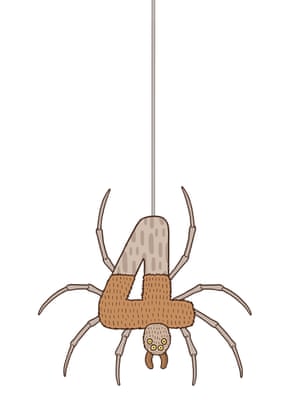
Hanging by a thread: many buildings in East Asia skip all floor and room numbers that include four. Illustration: Phil Hackett/The Observer
When I began researching the subject, I did not think of myself as having any particular phobias – apart, perhaps, from my teenage dread of blushing and an enduring anxiety about flying – but by the time I’d finished I had talked myself into almost every one. Some terrors are no sooner imagined than felt.
The causes of these conditions are disputed. We can become phobic after a shock, or just by witnessing the fear of others. Freud proposed that a phobia was a suppressed dread or desire displaced on to an external object. “Phobia particularises anxiety,” observes the literary scholar David Trotter, “to the point at which it can be felt and known in its particularity, and thus counteracted or got around.” Evolutionary psychologists argue that many phobias are adaptive: our fears of heights and snakes are hardwired in our brains to prevent us from falling from heights or being bitten by snakes; our disgust at rats protects us from disease. Evolution may help explain why women are disproportionately phobic, especially in the years in which they can bear children: their heightened caution protects their offspring as well as themselves. But phobias may also seem more common in women because the social environment is more hostile to them, or because their fears are more often dismissed as irrational.
All phobias are cultural creations: the moment at which each one was identified – or invented – marked a change in how we thought about ourselves. When we decide that a particular behaviour is irrational, we mark out our boundaries, indicating the beliefs on which our society is constructed. These borders shift over time, and in a moment of collective crisis – a war, a pandemic – they can change fast.
Phobias may be oppressive, but they also enchant the world around us, making it as scary and vivid as a fairytale. They endow objects or actions with mysterious meaning and give them the power to possess and transform us. They exert a physical hold, like magic, and in doing so reveal our own strangeness.
Clowns
A fear of clowns, known as coulrophobia, became prevalent in the US in the 1980s, after newspapers published pictures of the serial killer John Wayne Gacy dressed in a clown suit. The fear became a kind of collective hysteria, with “stalker clowns” spotted in Massachusetts, Rhode Island, Kansas City, Omaha, Nebraska and Colorado, and it spread even further in 1986 with the publication of Stephen King’s It. The supernatural jester in King’s bestselling novel is a malevolent being who takes on the shape of whatever a child most fears. His fixed grin hides a soul full of horrors.
Tiny insects
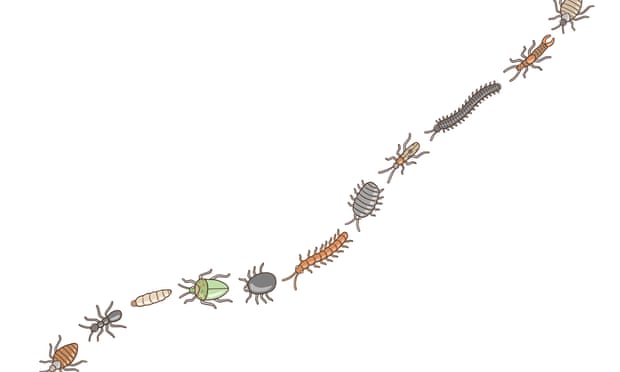
Creepy crawlies: extreme cases of acarophobia include the fear that minuscule creatures have invaded the body. Illustration: Phil Hackett/The Observer
Acarophobia is an extreme fear of tiny insects (akari in Greek), which can develop into a belief that minuscule creatures have invaded the body. Some acarophobes gouge out their own flesh in attempts to dislodge imagined insects. “I found him stripped to the waist,” wrote Luis Buñuel after visiting Salvador Dalí in a Parisian hotel in the 1920s, “an enormous bandage on his back. Apparently he thought he’d felt a ‘flea’ or some other strange beast and had attacked his back with a razor blade. Bleeding profusely, he got the hotel manager to call a doctor, only to discover that the ‘flea’ was in reality a pimple.”
Kayaks
At the turn of the 20th century, many Inuit men in Greenland abandoned the kayaks in which they hunted seals, having become paralysed with fear out at sea. In some coastal districts, more than one in 10 of the adult males had “kayak phobia”, a serious problem in a colony that, since the decline of whaling, had become dependent on seal hunting.
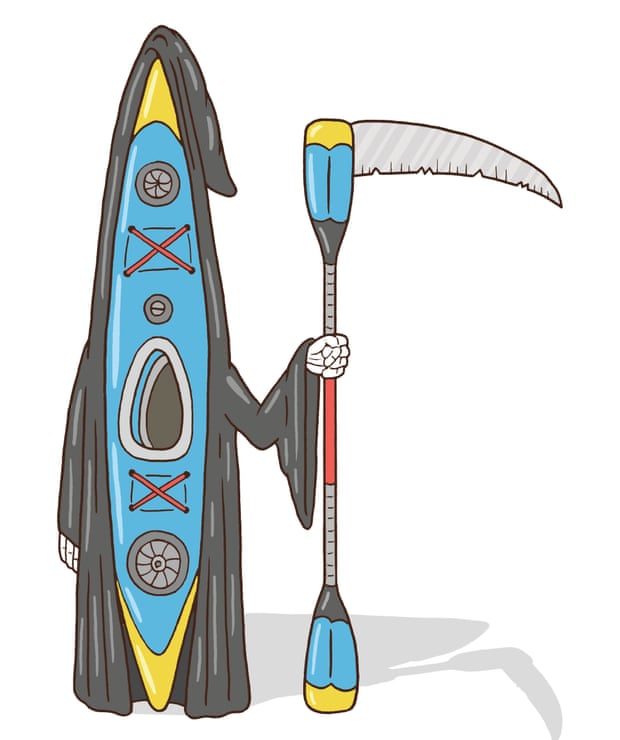
Grim reaper: kayak phobia was a serious problem among Inuit men in Greenland. Illustration: Phil Hackett/The Observer
Some have speculated that the phenomenon was a form of agoraphobia, while others argue that it stemmed from sensory deprivation, a loss of orientation provoked by the still, featureless landscape of the North Atlantic. But the Inuit had their own explanation. According to folklore, the terror was caused by a tupilak, a monster sent to kill a hunter by a jealous rival. Doctors interpreted kayak phobia as an individual pathology, but Greenlanders thought it emanated from social tensions. For them, the trouble expressed by a phobia was not personal but communal.
Frogs

Going green: batrachophobia is horror at a frog’s gleaming eyes and skin, and the pulsing sac at its throat. Illustration: Phil Hackett/The Observer
Some of us are horrified by a frog’s gleaming eyes and skin, the pulsing sac at its throat; its webbed feet, perfect stillness and sudden, vaulting leap. The aversion is known as batrachophobia, after the Greek batrachos (frog). In the early 1980s, a young woman in Michigan was mowing the riverbank near her house when she suddenly saw bloody chunks of frog spewing from the machine. She afterwards had nightmares about frogs; she hated to hear them croaking by the river; she fled if she found one in her house. Her visceral horror at the pulped amphibian flesh seemed to have coalesced with a guilty dread that the creatures might seek revenge.
The number four
Tetraphobia, or a fear of the number four (tessares in Ancient Greek), is common in East Asian countries, because in several languages (among them Mandarin, Korean and Japanese) the sound of the word “four” is very similar to the sound of the word “death”. Many buildings in East Asia skip all floor and room numbers that include four – 4, 14, 24 and so on – and some Hong Kong hotels jump from floor 39 to floor 50. In Taiwan, South Korea and China the numbers of ships and aircraft rarely end in a four.
A study published in the British Medical Journal in 2001 showed that Asian-Americans were 13% more likely to die of heart failure on the fourth day of the month than on any other day. The finding seemed to confirm that fear could be fatal.
Clusters of holes
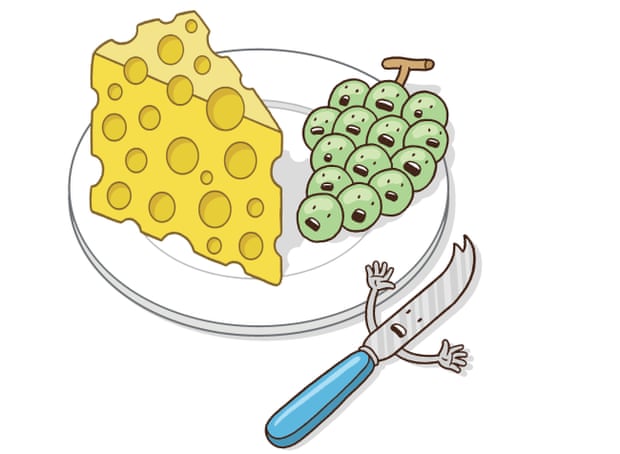
Say cheese: some scientists believe that irregular bumps and holes may trigger the disgust reflex. Illustration: Phil Hackett/The Observer
An aversion to clusters of holes or bumps was identified as a phobia in 2003, when an image of a seemingly maggot-infested female breast was circulated on the internet. Those who reacted most strongly learned they shared a horror of such patterns. Some created online discussion groups, and in 2005 one participant invented the word trypophobia (from the Greek trupē, or hole) to describe the trait.
The original internet meme turned out to be a composite of a lotus-seed pod and a woman’s breast, but this made it no less repulsive to true trypophobes. The phobia can be provoked by any conglomeration of rough circular shapes: in sponges, barnacles, crumpets, soap suds, honeycombs, the pitted back of a Surinam toad. Some scientists believe irregular bumps and holes may trigger the disgust reflex, which evolved to protect us from pathogens, because they are reminiscent of rashes, sores, cysts or the pustules of infectious disease.
Beards
In 2013, Jeremy Paxman accused the BBC of pogonophobia – a satirical term coined in the 19th century to describe a hatred of beards – after he appeared on Newsnight unshaven. He claimed the corporation was as averse to facial hair as the dictator Enver Hoxha, who banned beards in Albania in 1967. Early cave paintings indicate that even our Neanderthal ancestors removed their beards, perhaps to get rid of parasites, using clamshells as tweezers or flints as razors.
Roald Dahl loathed beards, denouncing them as “hairy smoke-screens behind which to hide”. In Dahl’s The Twits (1980), Mr Twit has a huge beard matted with old cornflakes and scraps of Stilton and sardines. “By sticking out his tongue and curling it sideways to explore the hairy jungle around his mouth,” observes Dahl, disgustedly, “he was always able to find a tasty morsel here and there to nibble on.”
Trains
In 1879, the physician Johannes Rigler gave the name “siderodromophobia” to a new illness suffered by railway workers. The word was a translation of the German eisenbahnangst, or “iron-road-angst”, into the Greek sideros (iron) and dromos (track) and phobia (fear). According to Rigler, the violent jolts of train travel could bring on physical and mental breakdown.
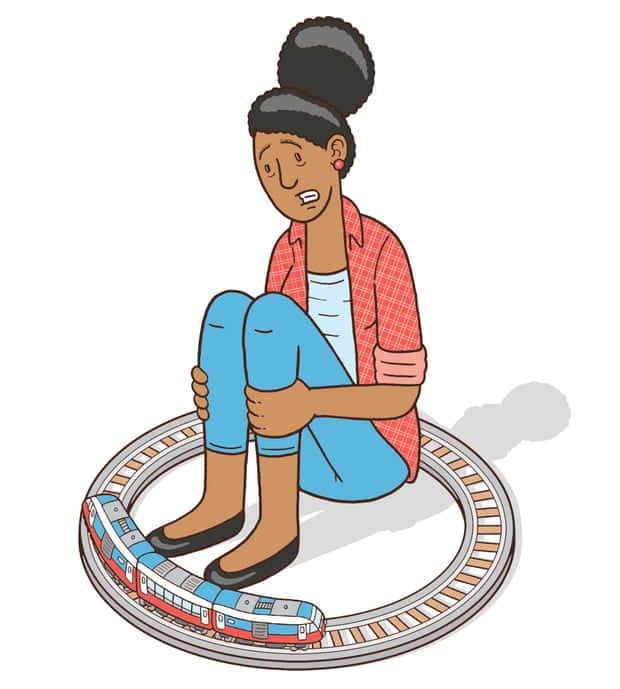
Wrong tracks: a 19th century physician claimed the violent jolts of train travel could bring on a breakdown. Illustration: Phil Hackett/The Observer
Freud thought his railway phobia began on an overnight train trip from Leipzig to Vienna when he was two. He speculated that he had seen his mother naked on this journey, and had developed the phobia by displacing on to the train both his excitement – “my libido was stirred up towards matrem” – and his fear that his father would punish him for his desire.
Freud later argued that boys were aroused by the pounding, juddering motion of railway travel. Those who repressed the fantasies associated with these sensations might, like him, acquire a phobia of trains. Instead of inducing excitement, the tremble of the locomotive would bring on nausea, anxiety and dread.
Telephone calls
Doctors at a Parisian hospital made the first diagnosis of téléphonophobie in 1913. Their patient was seized by anguished terror when she heard a phone ring, and upon answering a call she froze and became almost incapable of speech. In these early days, the telephone could seem a sinister, intrusive device.
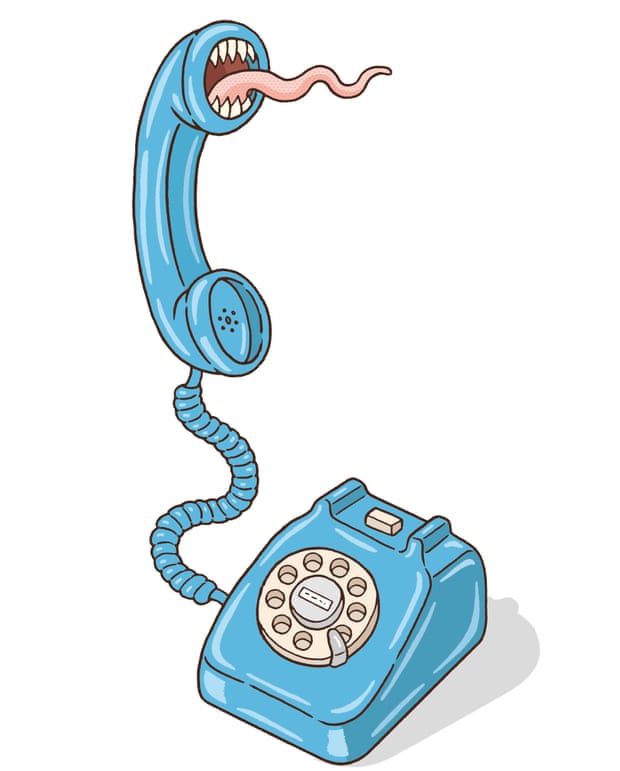
Wrong number: a survey in 2019 found 76% of respondents felt anxious when they heard the phone ring. Illustration: Phil Hackett/The Observer
In some respects, the situation has been reversed. Many of us are afraid of being separated from our phones, an anxiety jokily dubbed “nomophobia” in 2008. But now that we use mobile phones in so many different ways, phone calls themselves have become scary again. In a survey of 2019, 76% of respondents born in the past two decades of the 20th century said that they felt anxious when they heard the phone ring.
Sleep
Hypnophobia – from the Greek hypnos, sleep – is a morbid fear of sleep, usually caused by a terror of dreams or nightmares. The condition was identified in a medical dictionary in 1855, and vividly dramatised in Wes Craven’s A Nightmare on Elm Street in 1984. In this film, teenagers are visited at night by a disfigured and insane child murderer who has the power to kill them as they dream. “Whatever you do,” ran the tagline, “don’t fall asleep.”
- Karlston
-

 1
1



Recommended Comments
There are no comments to display.
Join the conversation
You can post now and register later. If you have an account, sign in now to post with your account.
Note: Your post will require moderator approval before it will be visible.